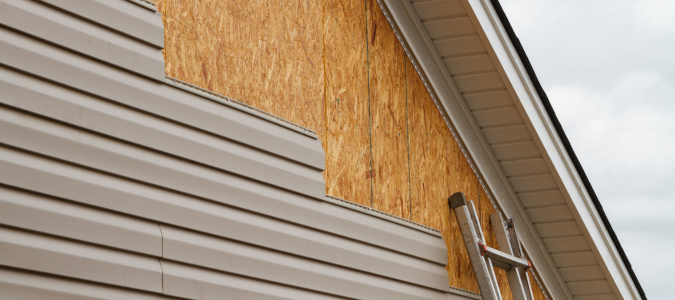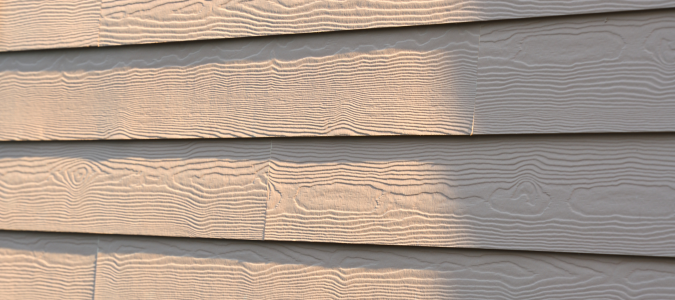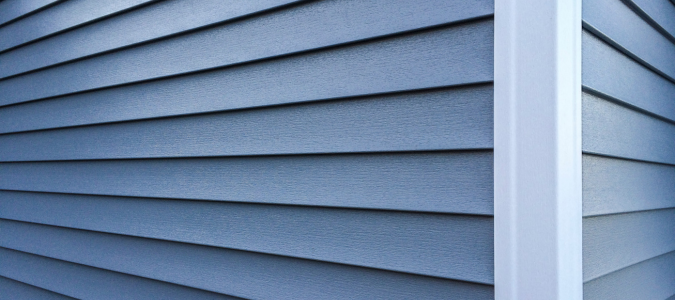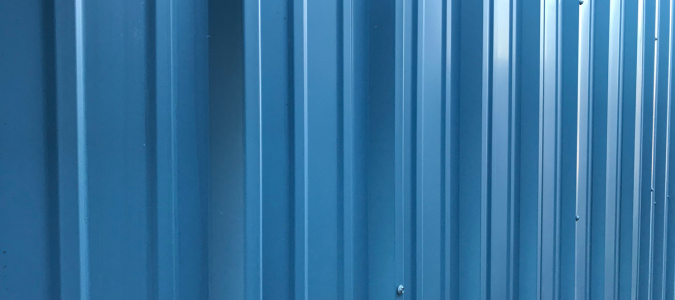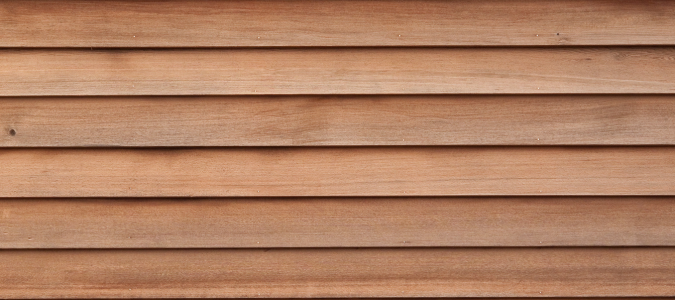Many homeowners take the siding on their house for granted, sometimes even forgetting it’s there. We often don’t realize its importance to our house’s structural integrity. It protects the home from sneaky pests and outdoor elements, and improves insulation. It also makes a massive difference in your home’s looks, as it is the most visible part of the exterior.
While vinyl, fiber cement, brick and wood sidings are durable, they’re not indestructible and will eventually need replacing. If you’re wondering if your house needs new siding, we’ll cover the signs you need to look out for and how you can perform the task. However, replacing the siding on your house is a complex project that takes up a lot of time and should be done by a professional.
Let a professional handyman do the job. With their tools and expertise, your home’s new siding will look flawless.
Replacing the Siding on Your House: When is the Right Time?
Homeowners should know when to replace the siding if they don’t want to deal with more costly repairs. If you notice any of these telltale signs, it’s time for new siding.
Frequent Maintenance
As your siding ages, your home will need repairs more frequently. Constant maintenance can get tedious, so it can be tempting to let more tasks slide. But once you do, the wood structure underneath will suffer and eventually become damaged. Before that happens, save yourself the trouble by upgrading your siding. The cost-benefit is also far greater.
Pest Damage
Termites, rats, woodpeckers and other pests aren’t just annoying: If you have a severe infestation, it can cause severe damage to your home. If you notice more pests are invading your home and wreaking havoc, that’s a possible sign that your current siding is attractive to them. You might want to upgrade to a more unappealing material for pests, like fiber cement.
Severe Fading
Faded siding is slightly unsightly, but it doesn’t mean you need to replace it immediately. But if your siding looks significantly different from its original color, that’s a sign that its weatherproofing is almost gone. While it hasn’t lost all its usefulness, it’s an ideal time to consider your replacement options. Replacing your siding will prevent more costly repairs in the future.
Warping or Cracking
Siding that’s warping or cracking doesn’t just lower your home’s curb appeal, these are also signs that your siding can no longer do its job well and needs a replacement. If the damage is limited to small areas, you can have a pro replace just the affected parts. However, if there’s widespread damage, you’ll need an entire siding replacement. Walk around your home and inspect it thoroughly for signs.
Bubbling and Mildew Growth
Bubbles and blisters on your siding are other worrying signs to look out for. Your siding’s job is to stop moisture from seeping into your home. But if you spot bubbles, your siding isn’t doing what it should and has developed a moisture problem.
Once moisture is trapped within your siding, mildew and fungus are the next issues to be wary of. They grow where there’s moisture, and the seams of your siding are ideal spots for them. If you don’t clean mildew and fungus off your siding, they’ll eventually eat away at the wood.
Rotting
Your siding takes quite a beating from Mother Nature, exposed to various outdoor elements around the clock. The mixture of water and different kinds of weather can eventually lead to rot. If your wooden siding is crumbling underneath your touch, that’s a possible sign of rot, and you need to take immediate action. Delaying your siding’s replacement will further damage your home’s structure.
If you notice these signs on your siding, contact a professional handyman. The handyman will assess the cause and level of damage, recommend the best material and install the new siding seamlessly. They can even show you how to power wash siding.
How Pros Replace Vinyl, Fiber Cement, Plywood and Brick Sidings
If an accident or bad weather damages your siding, it must be replaced as quickly as possible. Otherwise, water could enter your home, damaging its insulation and framing. A professional handyman will typically take these steps to replace vinyl, fiber cement, plywood and brick sidings.
Vinyl
The first step a handyman will take is removing the damaged vinyl pieces of a home’s siding. Then, they will cut out a new piece of siding to cover the lowest gap since vinyl sidings should typically overlap both sides by an inch. Next, they will slide the new piece of siding into place, ensuring its bottom channel interlocks with the top channel of the siding below it. They will nail the new piece down as they hold it in place and repeat these steps until they have replaced all of the damaged parts.
Fiber Cement
For fiber cement, a handyman will use a pry bar to detach any damaged pieces of siding and remove the leftover nails. Then, they will cut out the replacement board, ensuring it is the correct size. Next, they will attach the new bottom piece in place and the new top piece through the old siding. They will finish by priming the replacement boards and painting them to help them blend in with the existing siding.
Plywood
A handyman will use a pry bar and claw hammer to remove the damaged parts of the siding before cutting out the new siding, suing the damaged part as a guide. Next, they will cut the edges with a circular saw and cut around the power outlet, vent and window openings with a jigsaw. To finish, they will nail down the new siding and caulk its edges, allowing it to dry before they paint the wood.
Brick
Brick sidings are one of the most durable and low-maintenance options for homeowners. However, they’re also the hardest to install. A pro will have to prepare the surface for adhesion and install the bricks individually. Not only are bricks heavy, but you must also be precise as they lay them down. That’s why this task is best done by a professional handyman.
It’s best to trust a professional to replace your home’s siding. The handyman will have your home’s exterior looking perfect.
Types of Siding for Homes
It’s crucial to have the correct siding for your home. Here’s a rundown of the best options with their pros and cons.
Fiber Cement
Fiber cement, pictured above, is the best siding if you live in a hot and humid area. It is great at withstanding heat and won’t expand under intense sun exposure. It also holds up well in other weather conditions and is mold and pest-resistant.
However, here are some downsides you should consider:
- Expensive to purchase and install
- Not widely available
- Color can fade eventually
Vinyl
Vinyl, pictured above, might suit you better if you don’t like fiber cement. It’s lightweight, affordable, highly accessible and easy to install. While it’s not as tough as fiber cement, it still offers impressive durability. It can survive inclement weather and provide excellent insulation.
But as with any material, it has its downsides:
- Melts in extreme heat and becomes brittle in severely cold weather
- Releases dangerous fumes in extremely high temperatures
- Can develop moisture problems
If you want better performance, you can opt for insulated vinyl siding instead. It is a more energy-efficient option thanks to better insulation. You also don’t have to worry about moisture issues with this material. However, it’s more costly.
Steel Siding
Steel siding, pictured above, can be ideal for colder areas. It’s metal, so you can expect it to last for years. Aside from its notable durability, it’s fire-resistant.
But before you purchase steel sliding, take note of these disadvantages:
- Poor insulation
- Develops rust
- Expensive
How To Replace Wood Siding on a House
If your house has wood siding, it’s essential to inspect it regularly for signs of damage. Look for soft spots, discolored or faded areas and rotting wood.
Here are the steps a professional handyman will take if it’s time to replace your wood siding:
- Identify the damaged boards and outline the repair areas with a pencil.
- Pull or cut the nails of the board siding they are removing.
- Cut an inch past the outlined repair area and lift the board off with a pry bar. They will be careful not to damage the surrounding boards.
- Cut the replacement board into the correct size. They will use the old boards as their template.
- Install the replacement board by sliding it into place under the board above. Hold it in place and nail it down.
- Finish by applying caulk around the board’s edges and painting or staining the boards.
Replacing your wood siding is tedious work that requires skill and precision. If you want your house to look its best, leave the task to a professional handyman.
Call a Professional for Siding Repairs and Replacements
It’s hard to take back any mistakes you make with your siding. That’s why it’s best to let a professional handyman take over. This skilled professional will perform the necessary repairs and replacements as you sit back and relax. They can even help you with other home projects, like cleaning gutters from the ground.
ABC Can Handle Any Siding Project
When it comes to replacing siding on your home, it’s best to leave this task to the professionals. With different types of siding, it can be difficult for homeowners to acquire the tools and knowledge to know how to best replace the siding on their home. Instead of spending your free time figuring out all of the details, contact the handymen at ABC Home & Commercial Services. Our professionals are highly skilled and would be happy to help with any siding help you may need. Our handymen can even help with other projects, like power washing a deck.
